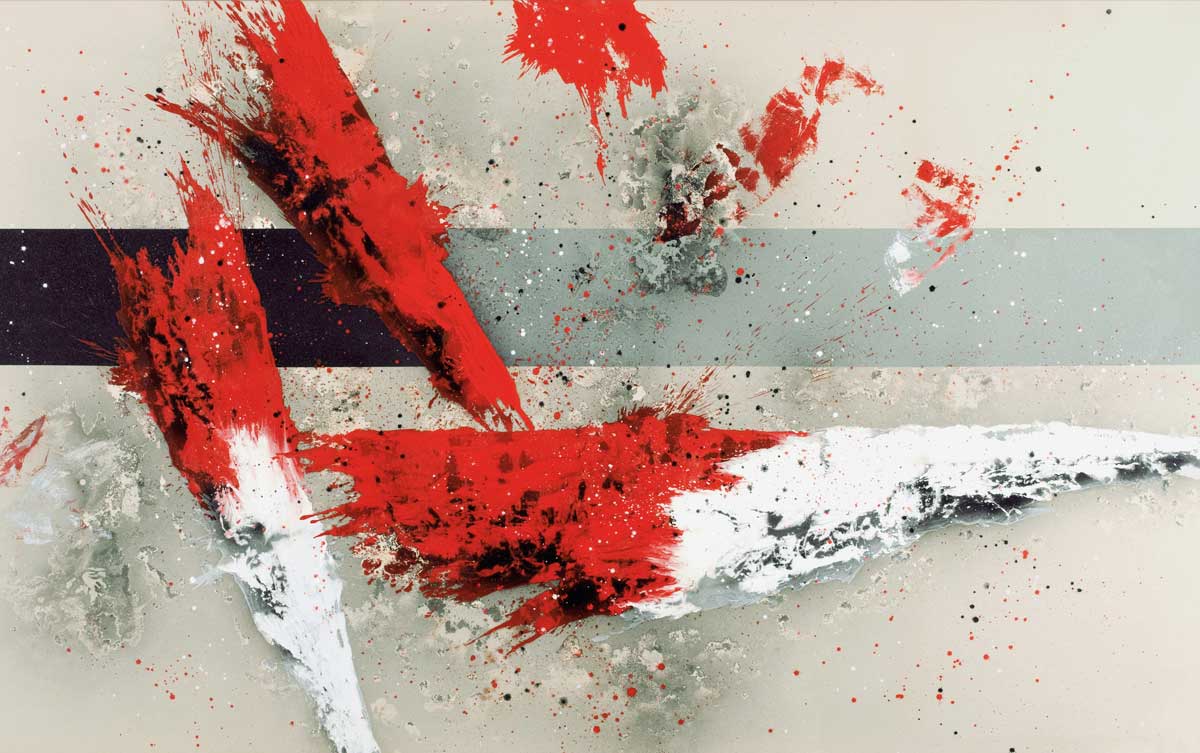
LA GUARDIA PLACE
LA GUARDIA PLACE (2006-2008)
It has been said that when Ciria arrived in New York in 2005 he revisited his entire body of work cyclically in search of new formal solutions. It was a key moment in his research into line as a modulating instrument for the expansion of the stain. Drawing and line became a structural and compositional tool for the image and defined new themes and presented the possibility -within his new D.A.A. (Dynamic Alfa Alignments) conceptual and theoretical platform- for modular repetition (matrices).
The first group of work made in New York belonged was titled the Post-Suprematist series, (a tribute to Malevich’s late work where he returned to a kind of seemingly naive figuration), and engendered Ciria’s Automatons (Autómatas) series in 1984 and 1985. The series is based in an investigation that intends to recover line at the same time as it meticulously prepares a progressive cooling down of the gestural expressiveness of his earlier work. The final possibilities the Post-Suprematist work offers paves the way for emancipating the figure and became a series of compositions that, even if it retains the structural as a container for the stain, attains a previously unexplored formal freedom. The La Guardia Place series, whose name is taken from the street in New York where the artist’s studio is located, emerged in this way. Art critics have drawn a clear parallelism between that series and the group of works brought together in the Men, Hands, Organic Forms and Signs (Hombres, Manos, Formas Orgánicas y Signos) from 1989-1991.
La Guardia Place was to become Ciria’s first major American series. And in this series we find a subliminal game that beguiles the viewer’s possible readings because it encompasses works that oscillate between figurative insinuation and abstract purity, and in that passage it presents a very memorable set of works that are hybrids of those two positions which we cannot quite manage to demarcate.
The idea is presented as a critical concept acting as a catalyst that is bound to drawing conceived of as a basic formal structure over which the painterly image gravitates but allows the structure to shift into recognizable forms or elements with complete compositional freedom.
